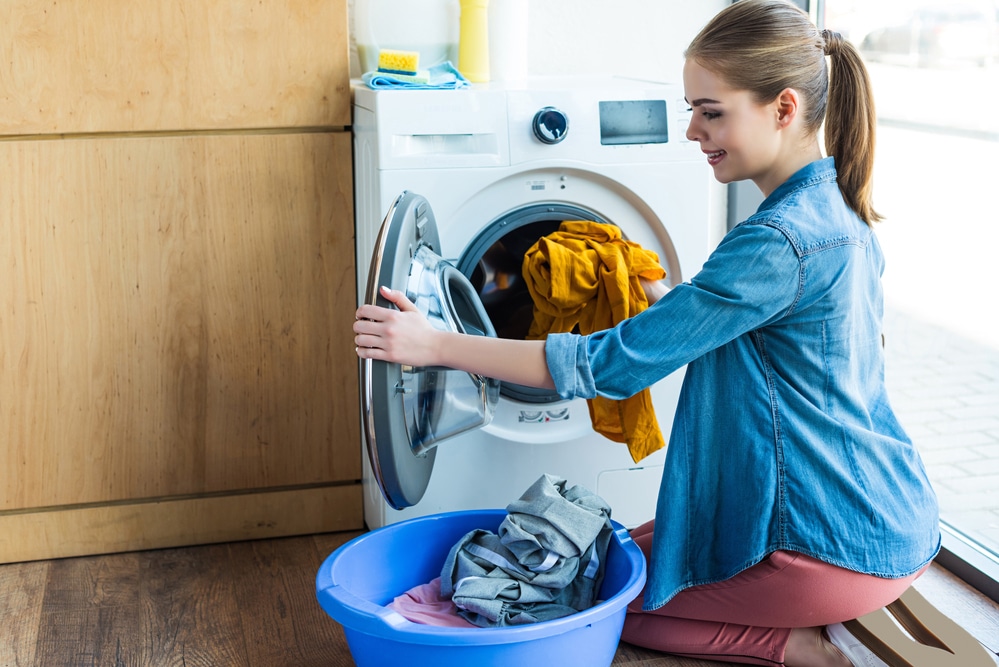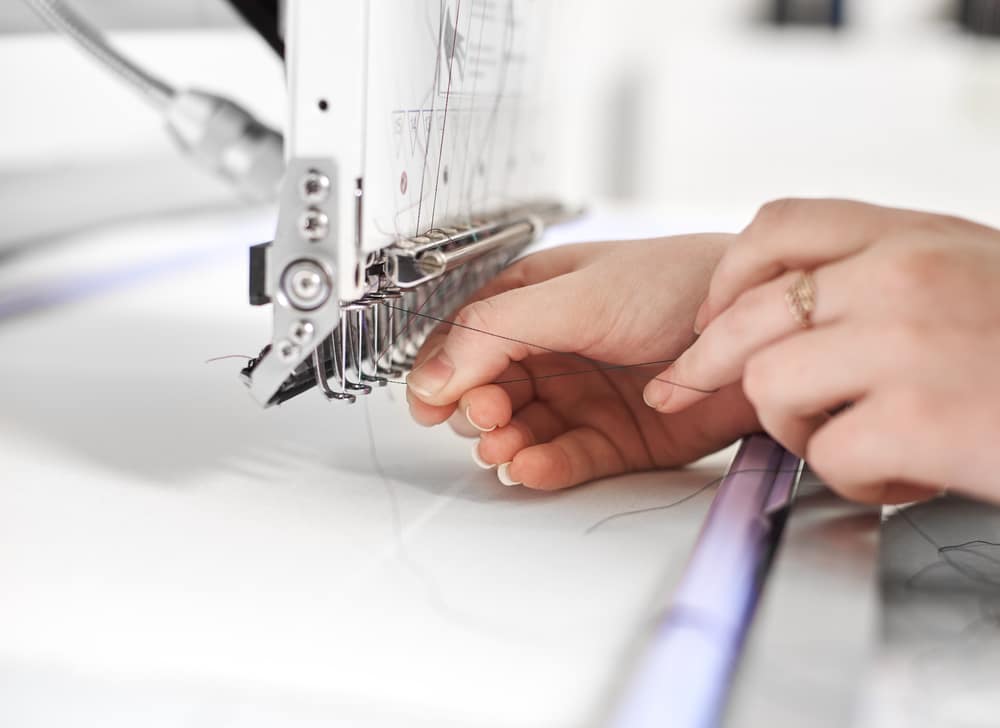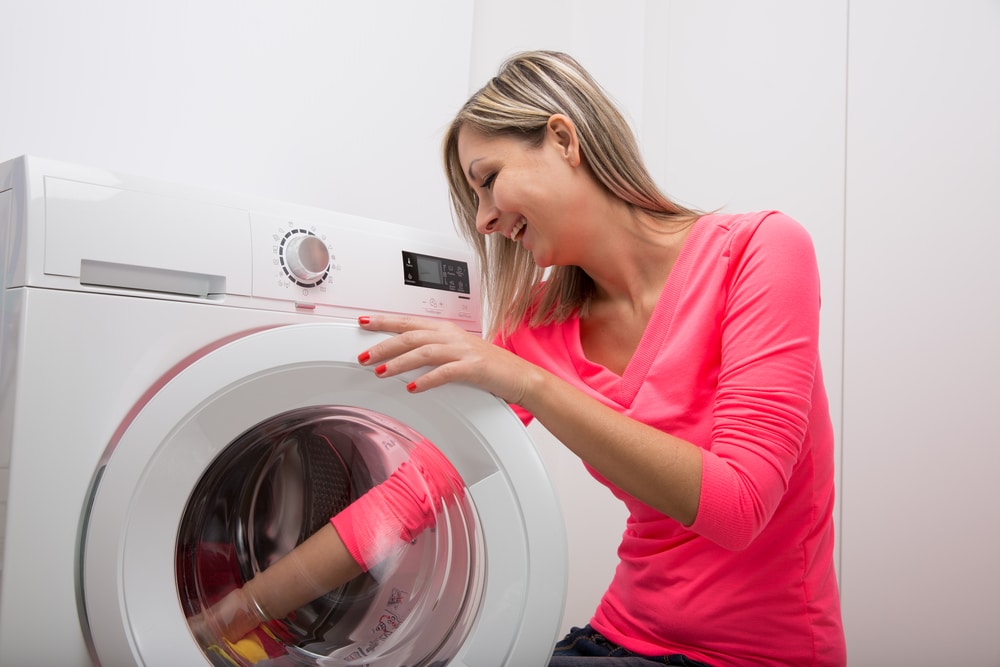Last Updated on
Usually, years go by with your washing machine comfortably in place, and there’s no need for you to do anything with it. However, you will need to relocate that large piece of equipment when the time comes to replace an old washing machine with a new one or when you decide to move to a new home.
For many people, figuring out how to disconnect a washing machine can seem like a daunting prospect. There’s a hot and cold-water supply to consider, various wires and plugs, plus you need to think about the overall size and weight of the machine.
The good news is you don’t have to tackle this process alone. Here’s your guide to disconnecting the washer without the hassle.
Getting Started: Unplugging Your Washer
The first step in disconnecting a washing machine is unplugging it. You should be able to find the plug for your washing machine in the outlet closest to the device. If your washing machines were already installed before you moved into the house, the outlet might be hidden behind the machine, so you might have to pull it out slightly to get a look.
It’s vital to completely unplug the power, despite the temptation to simply turn the machine off. It will ensure that you’re less likely to short your washing machine when you pull it away from the wall and sink. You should unplug your appliance regardless of whether you’re moving your washing machine or you want to pull it out for repair.
Remove the plug from the wall and hang the plug end somewhere you’re not likely to trip over it. You might want to sellotape or clip the plug somewhere, so it doesn’t fall into any water when you’re emptying your appliance.
Only once you fully disconnect the power can you begin to think about emptying the washing machine, pulling it further into your room, or starting a repair.
Turn Off the Water Supply

Once you’re sure that there’s no power going to the back of the machine, you’ll need to ensure that there’s no water supply connected too. Washing machines are often plumbed into the water pipes in your home. Turning off the water that would normally flow into your washing machine will stop you from creating a mess as you disconnect the device.
There are a few ways to turn off the water in a washing machine. The easiest option is to shut off the water to the hookup valves and close the valves themselves nearby your washing machine. Some homes have an exposed valve to shut off washing machine connections before pipes connect to specific valve locations. If you have one of these, you can close the valves during repair or removal.
If you don’t have special valves at the washing machine, there should be a shut-off point for your appliance on the connected valves that lead from the washer to the wall.
You can also disconnect your entire water main while you’re working. Don’t worry! You can turn the water pipe back on afterwards. Turning off your water at the main supply will mean that you aren’t pulling any more water into your house for as long as the supply is turned off. There may still be some water in your pipes, however.
How Do You Drain a Washing Machine for Moving?
If you’re going to be moving your washing machine or you want to disconnect a washing machine to bring a new model in, you’ll need to drain the old device. Draining the other washing machine will make it easier to move and ensure that your water supply doesn’t pour onto the floor where you want your new washing machine to sit.
Drain your washing machine by carefully pulling the washer out of the wall, so you can see the back of the machine and see all of the connection points. You may want to lay down some towels just in case the drain hose spills.
Carefully remove the drain line or waste pipe at the back of your washing machine. It is the hose or pipes your washing machine uses to get rid of wastewater when draining. The waste pipe may connect to the main kitchen sink drain or other hoses in your home.
If you’re not sure what a drain hose should look like, look for the hoses shaped like a U that connects to your home’s wastewater connection. Disconnecting the waste pipe should be easy enough. Place a bucket on the ground behind the washing machine before you remove the waste pipe.
The bucket will be able to collect most of the water that gushes out of the waste supply. You can place your towels around the bucket to capture any spills or overflow.
Allow the water from your washing machine to drain through the pipe into the bucket, ensuring that everything empties. You may need to straighten the pipe to get it as empty as possible.
Disconnecting the Supply Lines
When preparing your washing machine for transit, repair, or other services, it’s essential to remove all of the water connection points linked to the device. After you’ve emptied the waste pipe, look for the supply lines. These are the pipes attached to the hot and cold water in your home. You will need to locate and free these pipes so you can move a washing machine onto a moving dolly or prepare it for service.
If you still have the instructions you got with your washing machine, you can use these to see where your supply lines should be located. It is often helpful for repair services. If you can’t tap into this information, look for a set of metal hoses that connect to two valves in your wall. These will probably be your supply lines.
Once you find the valve connecting to the wall, use a wrench to remove the washing machine pipes from the wall carefully. It might be a difficult process, as old washing machines can end up with corroded pipes after years of doing laundry. Once you disconnect the supply lines, drain the remaining water that may be in your pipes into the bucket from before. You can drain the bucket into the sink from time to time to avoid leaks.
Place a cap on the end of the valves in your wall temporarily until you’re ready to line in a new washing machine. It will help to prevent leaking during a repair or service. You can also put cap ends on the washing machine valves after they’re disconnected.
Preparing Your Machine for Removal
If you’re getting a new washing machine installed, then you’ll need to get the old one ready for removal. Keep your water supply off for now until the new washing machine is disconnected. If a professional comes to install your new machine, they will usually disconnect the water anyway.
If all of the valve, line, and hose components connecting your washing machine to the line are now removed, you should be able to pull the device further away from the wall. Be careful to do this safely, making sure you don’t tug on any line connections. Once you have room to walk around your washing machine, you’ll be able to check for any remaining electrical connections or hoses. You can use pliers to clear any obstructions in the pipe that you notice when you remove the supply valve from the wall with your wrench.
If you notice scale buildup on your washing machine, you can also scrub these parts for you to load the washing machine safely into any removal vans. Remember to use transit bolts to keep the drum steady if you move your washing machine to somewhere new.
Make Your Move
Whether you’re moving to a new home or buying a new washer, learning how to disconnect a washing machine can be an easy task. Just follow the instructions in this article, and you’ll be done in no time. Just like with any endeavour, always practice safety when handling electrical and heavy equipment.
Have you ever needed to move your washer? Tell us about it below.
Rebekah is a writer who loves to explore new products and find hacks that make life easier. She has a knack for all things home improvement, health and fitness. So you’ll often find her on Pinterest or browsing Houzz for ideas.
She’s always looking for the next thing to fix up around the house or what gadget might be just right for her lifestyle. Rebekah enjoys exploring new recipes, taking care of her family, and making sure she stays healthy with regular workouts at the gym.



